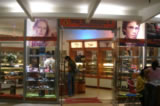City History
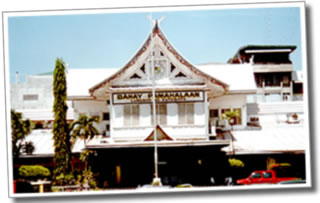
Founding Fathers
Cotabato City had witnessed more history than any other place in Mindanao. Its history dates back to the 16th century when Shariff Kabunsuan, an Arab missionary from Johore, landed along the banks of the Masla Pulangi now known as Rio Grande de Mindanao. Shariff Kabunsuan introduced Islam to the natives which lead to the establishment of the Sultanates of Maguindanao, Rajah Buayan and Kabuntalan.
During the golden age ushered in by Sultan Dipatuan Qudarat in the 17th century Cotabato became the first capital of Mindanao.
Spanish Colonization
External conflict too, claimed a costly toll starting in the latter half of the 16th century, when Spain attempted to colonize Mindanao and its people.
The introduction of the Christian faith in 1870 by the Jesuits and the ruling of Sultan Makakua gave rise to the birth of the modern-day Cotabato with the construction of roads and bridges and wharves.
However, the then Municipality of Cotabato was first organized at the later part of 19th century when Spaniards established a military post at Barangay Tamontaka, one of the earliest Christian settlements.
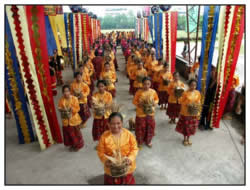
Mass Migration
In 1913, migrants from Visayas and Luzon bound for agricultural colonies in Mindanao streamed to Cotabato and most of them opted to settle in this part of Mindanao instead of proceeding to their intended destinations.
In 1924, the nation’s Chinese community, recognizing the needs and potentials of the town, donated P200, 000.00 for the establishment of a Chinese school. By 1932, the town of Cotabato with an area of 1,680 hectares had a population of 5,870 with over 200 buildings made of permanent materials built.
Mindanao - The Land of Promise
In 1945, with the withdrawal of the American forces
from the Philipine soil, the vast untapped resources of Mindanao
became the focal attention of the national government. In the face
of gigantic economic challenges as the nation emerged under the  late
President Manuel Roxas, an aggressive propaganda program was designed
to attract settlers to Mindanao under the slogan “Mindanao is the
Land of Promise”.
late
President Manuel Roxas, an aggressive propaganda program was designed
to attract settlers to Mindanao under the slogan “Mindanao is the
Land of Promise”.
Many landless families in the Visayas and Luzon
responded to the call. The influx of migrants from Luzon and the
Visayas islands intermingled with the Christians and Muslims in
the area. It was only natural that the growing social milieu and
diverse
cultural heritage, customs and traditions and idiosyncrasies developed
some tensions. But on the whole, it has opened up previously uninhabited
and rich hinterlands.
Cotabato in Flames
After the Second World War, the town started rebuilding itself from the ravages of war. No sooner had it felt the initial gains from its laborious efforts of development when another tragic setback was encountered on February 5, 1949. The entire commercial district went up in flames. The years in 1940’s were marked with increased rates of criminality, especially burglaries. The post-war years proved to be difficult. From 1945 to 1950, revenues generated totaled to only P217, 812.00. However, it improved the following year, yielding P274,316.36.
Cotabato becomes a City
Before the end of the decade, Congressman Salipada K. Pendatun felt that the town (which covered the new provinces of Sultan Kudarat, North Cotabato, Maguindanao, and South Cotabato) could now stand on its own and progressive enough to merit the status as a City. Accordingly he filed a bill in Congress for the change in status.
On June 20, 1959,  President Carlos P. Garcia signed into law - Republic Act 2364
which made Cotabato a chartered City. Even then, there were those
who doubted whether the infant city could continue raking in enough
income to support its local government and its people. The challenge
was met when in 1965 - 1966, Cotabato City’s income reached the
1 Million mark.
President Carlos P. Garcia signed into law - Republic Act 2364
which made Cotabato a chartered City. Even then, there were those
who doubted whether the infant city could continue raking in enough
income to support its local government and its people. The challenge
was met when in 1965 - 1966, Cotabato City’s income reached the
1 Million mark.
City Mayoralty
From the time of its creation, Cotabato City's reigns of government changed from one hand to another.
- The first Mayor of Cotabato City was Datu Mando U. Sinsuat who served for the following terms: 1947 to 1951 and from 1952 to November 16, 1967. His administration was the longest.
- He was defeated in his bid for re-election by Teodoro V. Juliano who served as City Mayor from November 17, 1967 to February 2, 1975.
- Juan J. Ty succeeded him and served from February 3, 1975 to February 28, 1980
- Again, Mayor Teodoro V. Juliano served from March 1, 1980 to March 5, 1984.
- From May 12, 1984 to March 1986, the City was again under the administration of Mayor Juan J. Ty.
- The youngest, so far to administer the City’s local government was charged with Mayor Ludovico D. Badoy who served from March 30, 1986 to December 2, 1987.
- Two served as Officer-In-Charge, Arthur P. Bueno and Dra. Lydia Mercado for three months respectively.
- Mayor Ludovico D. Badoy was re-elected for a second term which started in May, 1988 to January 1998.
- All these elected / appointed officials had significantly contributed to the city’s present state of development during their administration. However, in the 1998 local election, a new mayor Datu Muslimin G. Sema was elected to serve the city.
The Father of Modern Cotabato
The year 1999 proved to be another productive
year for Hon. Datu Muslimin G. Sema, the Local Chief Executive in his continuing effort to steer the city’s development
thrusts with his unmistakable 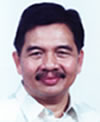 dexterity in handling the complexity of the city’s multi-faceted role.
dexterity in handling the complexity of the city’s multi-faceted role.
Under his able leadership, city residents continued to live in a relatively peaceful condition with nary a kidnapping incident occurring within the city’s jurisdiction, a far cry from the dreaded situation of the past recent years. Peace and order remained as top priority of his development agenda.
Through his initiative, the Local Chief Executive was able to draw the support of his fellow Local Chief Executives from the eight municipalities in Maguindanao Province namely:
- Datu Odin Sinsuat
- Datu Piang
- Kabuntalan
- Parang
- Sultan Kudarat
- Talayan
- Talitay
- Upi
to form the Metro Kutawato Development Alliance (MKDA), an inter-LGU cooperation to sustain the gains of the peace process and spur economic growth within the cluster area.
The Local Chief Executive likewise was able
to introduce an unprecedented development  in strengthening local governance through the Barangay Modernization Program.
Cotabato City became the pioneer Local Government Unit in the
country to computerize the administrative functions of the barangay.
Eventually, these barangays will become virtual modern reading
centers through the facility of internet services. This feat
led some respected sectors to name him “Father of Modern Cotabato”.
in strengthening local governance through the Barangay Modernization Program.
Cotabato City became the pioneer Local Government Unit in the
country to computerize the administrative functions of the barangay.
Eventually, these barangays will become virtual modern reading
centers through the facility of internet services. This feat
led some respected sectors to name him “Father of Modern Cotabato”.
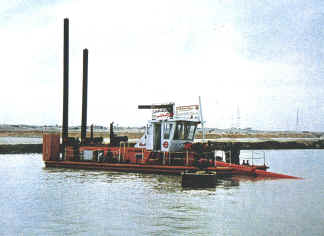
As a demonstration of his strong political representation with the National Government, he was able to bring to Cotabato City the dredging equipment of the Naval Construction Brigade of the Philippine Navy to de-silt the main waterways of Rio Grande and Tamontaka River. To date, more than 20,000 cu. Meters have been extracted from Buaya-Buaya and dumped at some low-lying areas.
The rapid and certainly problematic influx of migrants to the city, as then Cotabato Empire’s premier city and now Region XII’s capital and even ARMM’s temporary seat of its regional government has been an established demographic fact. In 1990, 87.32 percent of the city’s entire population lived in the urban areas. As a result, the original five barangays were subdivided into 37 barangays. Three of these original barangays are considered urban while the other two as rural. These barangays were again subdivided into cluster of three or four barangays per sub-cities, comprising of twelve (12) sub-cities.
Cotabato - Now the Center of Regional Government
In the hierarchy of settlements, Cotabato City is the regional government center for Region XII. Today, it is the seat of two administrative regions, Region XII and the Autonomous Region in Muslim Mindanao. Its population has grown tremendously largely brought about by migrants drawn to the city to satisfy their needs for education and other services and for economic opportunities.



 Cotabato produces some of the best exotic fruits in the country > Rambutan, lanzones,
marang, banana, durian and mangosteen.
Cotabato produces some of the best exotic fruits in the country > Rambutan, lanzones,
marang, banana, durian and mangosteen.  Cotabato City is also dubbed as the Land of the Crabs and local tourists usually
go to the market for cheap crabs and prawns.
Cotabato City is also dubbed as the Land of the Crabs and local tourists usually
go to the market for cheap crabs and prawns.

